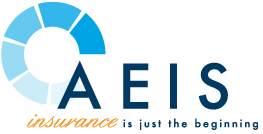Section 125: What it is and What It Means to Employers

CEO's, managers and human resource professionals may struggle a bit with what exactly is a Section 125 Plan and what it can mean to employers. At AEIS, we make it part of our mission to help small to medium-sized employers understand the employee benefit products and programs available to them, including Section 125 Plans.
Adding to the confusion is the fact that these plans can be known by several names. While Section 125 Plans are named for the applicable IRS code that governs their use, they are also often referred to as a cafeteria plan or flexible benefits plan. In addition, these plans are available in three primary forms, each with its own value and appeal to certain companies and employees.
These plans certainly offer benefits to employees, but how can they positively impact employers? If your company has been sitting on the sidelines when it comes to implementing or even investigating a Section 125 cafeteria-style plan, here is what you should know about them and how AEIS can help.
What is a Section 125 Plan?
A Section 125 Plan is a benefits plan authorized by the IRS Code that bears its name. It is a written plan that allows employees the flexibility to choose compensation in the form of benefits or in cash. The real beauty of a Section 125 Plan is how it provides value for both the employees and the company. Both can enjoy significant tax benefits and companies may discover a new valuable recruiting tool. This is particularly important in a time when valuable employees are difficult to keep and recruit.
How Do Section 125 Plans Work?
While Section 125 Plans are offered by employers, they are approved and accepted in writing by employees. It provides the employees with an opportunity to pay for certain medical, dependent-care and dental expenses with pre-tax dollars. In essence, this reduces the taxable income for employees while also reducing the employers' share of Federal and State taxes, Social Security contributions, and unemployment taxes. These savings benefit both employees and employers. It also provides an opportunity for employers to offer employees a more personalized, appealing, cafeteria-style benefits plan that suits their needs. It is a more efficient, effective and affordable way to provide employee benefits and keep your company attractive to the workforce.
Types of Cafeteria Plans
There are three types of Section 125 Cafeteria Plans.
- Premium Only Plan (POP)
This is often considered the foundation of the Section 125 Plan. It allows employees to pay health related insurance premiums (health, vision, dental) with pre-tax (tax-free) dollars.
- Flexible Spending Account
An FSA (Flexible Spending Account or Flexible Spending Arrangement) allows employees to put pre-tax dollars into a spending account specifically to cover health care costs. This allows an employee access to funds to help cover medical expenses. It also allows employers to reduce their share of social security, income and unemployment taxes.
- Health Savings Account
An HSA also grants employees the ability to make contributions as pre-tax deductions from their salary. The employee must first be enrolled in a high-deductible health plan (HDHP) and unlike an FSA, the election amount in not pre-funded, meaning funds are immediately available for reimbursement use.
- Dependent Care Assistance Plan (DCAP)
This employee benefit plan allows employees assistance in paying for care of dependents who qualify under IRS regulations. DCAP contributions are paid with pre-tax funds and can be used for a variety of qualifying care such as elder care, nursery schools, day care, camps and other programs. Employees choose how much in annual contributions they would like to put into a DCAP and funds are deducted each pay period.
What is a Section 125 Deduction?
A Section 125 deduction is the amount of pre-tax funds employees choose to contribute to their Section 125 cafeteria plan. These deductions occur prior to their payroll taxes, so income taxes are reduced. These deductions are at the core of the benefits of a Section 125 Plan for both employees and employers as it reduces taxable income for employees and employers' shares of these taxes for employers.
Who Needs a Section 125 Document?
Any employer who wants to offer their employees the benefits of, and wants to take advantage of the benefits of a Section 125 cafeteria plan themselves will need to have a Section 125 Plan Document. This is a written document that allows employees to choose certain benefits instead of cash payments as part of their salary. Some employers do not realize that this document is required and should be prepared and updated annually by professionals in the benefits administration industry.
A Simple Cafeteria Plan Strategy
Many small to medium sized businesses forgo offering employees the benefits of a cafeteria plan and of taking advantage of the benefits of a Section 125 Plan themselves for a variety of reasons. Perhaps they feel employees may not understand or appreciate the benefits of such a plan. They may not realize the overall impact on their own tax savings. They may not see the value of a Section 125 plan as a recruiting tool. They may just view the process as being too complex.
At AEIS, we can assist you in creating a simple cafeteria plan strategy that you and your employees will appreciate. We can help you take that next step in competing in your industry for employees and in building a more attractive bottom line.
If your company has been standing on the sidelines when it comes to a Section 125 Plan, now is the time to move forward. A well-crafted plan can help you lower your company's tax burden while making it more attractive in recruiting talented team members. It can assist you in keeping those MVP employees so critical to your success.
What is a Section 125 plan? We invite and encourage you to contact us and learn more today. Discover how AEIS and a Section 125 Plan can take your company to the next level.
AEIS is a California-based, employee benefits brokerage firm with over 35 years of experience working with small to midsize companies. Insurance is just the beginning and we make it easy for you. We work diligently in keeping our clients competitive, both from a bottom line perspective but in maintaining and recruiting superior talent. We are pleased to help companies in every stage and in every industry. Compete better with the help of AEIS.



